For more stories like this, subscribe to The Phoblographer.
“It’s something I would love to do more of, connecting film photographers from around the world”, says Barney Smith of the UK. He’s an underwater photographer with a self-confessed obsession for shooting film. Barney enjoys his photography more without the conveniences of a digital camera. It took him a while to learn the basics, but he never looked back once he got the hang of analog photography. Shooting film makes him slow down and think carefully about every possible variable before clicking the shutter on his Nikonos camera.
Want to get your work featured? Here’s how to do it!
Film photography isn’t rare, but how many photographers do you know of who shoot film underwater? Even rarer would be those who double expose a roll of film among the fish like Barney Smith does. Lighting under the surface of the oceans complicates metering calculations, even for a single image. Imagine trying to do that twice for the same frame, across thousands of miles, under two different oceans. Possibly under significantly different lighting conditions even. I’d pick a digital camera any day to do what Barney does down there. He thoroughly relishes being underwater with decades-old analog cameras. It’s not even close to easy, but the results of his work are worth the efforts he’s putting in. Slowing down in any genre of photography is an excellent way to live the moment before freezing it. Barney tries to make each frame count, and he enjoys his dives even more this way.
The Essential Photo Gear of Barney Smith
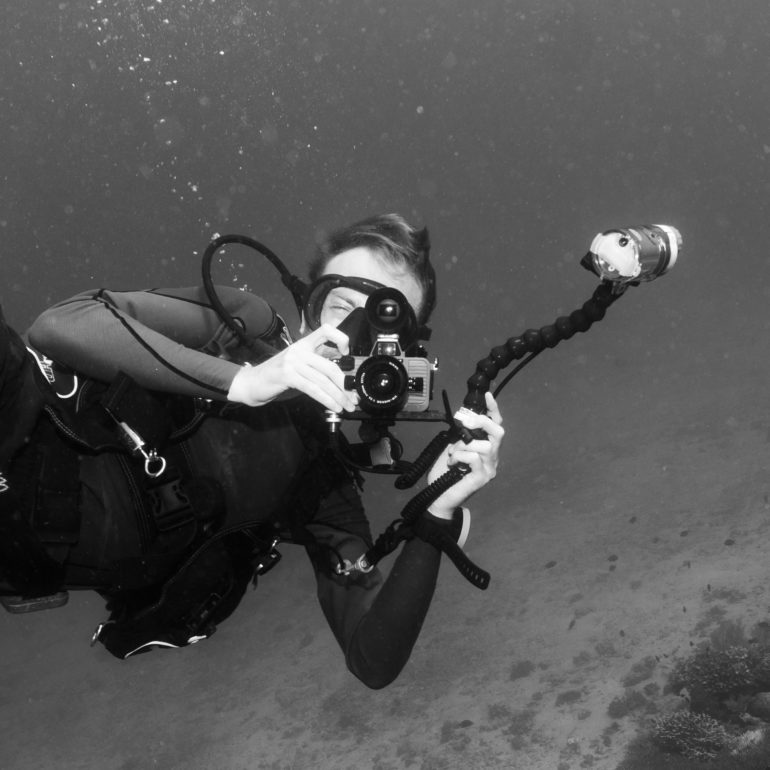 Barney shooting the Nikonos V in indonesia
Barney shooting the Nikonos V in indonesia
Barney told us:
For this particular double-exposure project I used my Nikonos V. This camera is a 35mm underwater viewfinder camera that was produced from 1984. It is a scale focus camera, so you have to estimate your subject distance first and then dial this into the lens. This is made more difficult as objects appear closer underwater, alongside having to shoot wide open due to low light levels and the fish often swim away before you get the chance to take a photo! I often compare shooting film underwater to street photography where you set your distance and wait patiently for the subject to come into your frame. For this particular double exposure project I used my Nikon UW-Nikkor 15mm f2.8 lens that I was trying out for the first time; it’s widely regarded as one of the best wide-angle underwater lenses ever made and is still used by modern digital photographers to this day.
The Phoblographer: Tell us about yourself and how you became interested in photography.
Barney Smith: My name is Barney and I’m an underwater film photographer originally from Cornwall in the UK. I first became interested in photography when I inherited an old Minolta SLR from my granddad. I still remember the excitement I had dropping off my roll of film at the drug store, eagerly awaiting the prints and delighted by actually having one usable image. I took that camera on all of my backpacking adventures including to Japan where I lapped up the camera culture, exploring the secondhand camera shops and developing rolls of film in the wonderful labs they have.
Soon afterward I landed a job working for a marine research NGO in Indonesia and via an Instagram page (@nikonos_project) I found out about a relatively inexpensive underwater viewfinder film camera called the Nikonos V. I took it with me along with several rolls of film and it wasn’t till I got home 6 months later that I saw the results. From then on I have obsessed over shooting film underwater and had the wonderful opportunity to connect and share my experience with like-minded people all over the world.
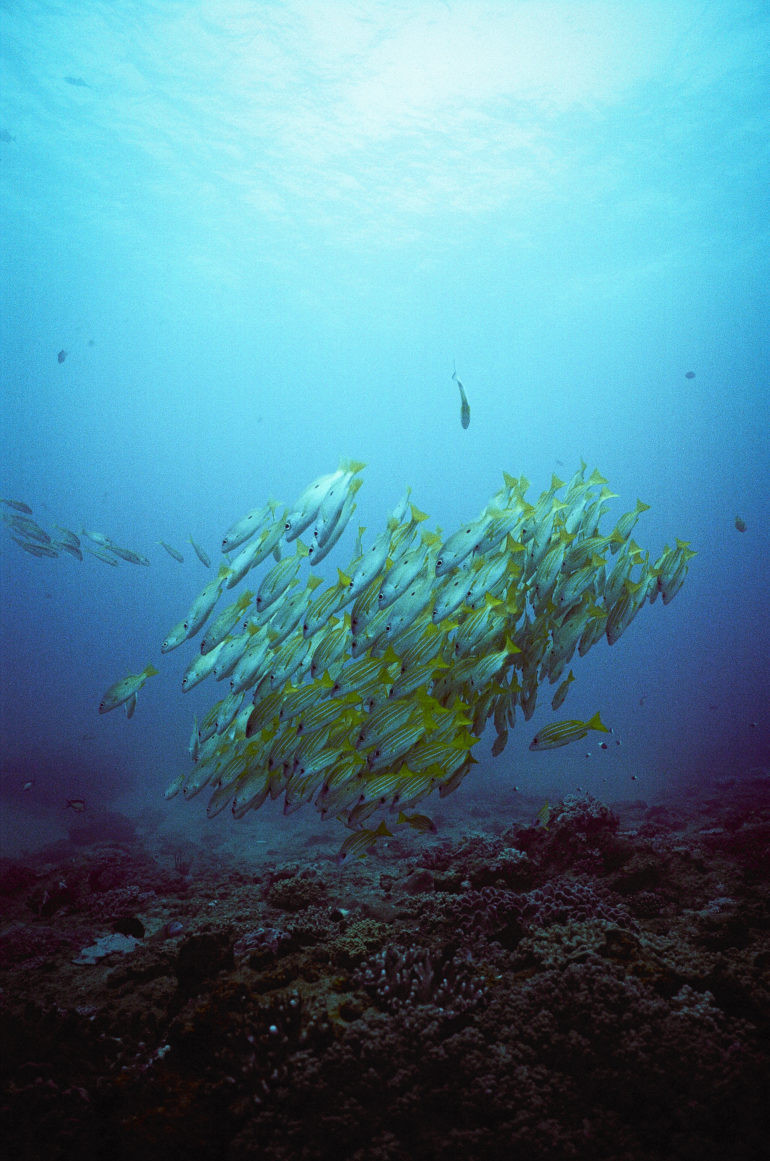 Schools out. Mozambique, Nikonos V 15mm Portra400
Schools out. Mozambique, Nikonos V 15mm Portra400
The Phoblographer: Portra 400 – accurate colours and a neutral skin tone. What was the emotional reasoning behind using this film for an underwater series?
Barney Smith: My preferred film stock to shoot underwater is actually slide film. Some of my favorite photos have come from shooting Ektachrome as the blue cast on the film scans perfectly enhances the underwater scenes. However, slide film has a really poor dynamic range, and due to the likely chance of overexposure with the double exposure, I decided to opt for every film photographer’s favorite – Portra 400.
Double exposures on the Nikonos V are not straightforward, you need to shoot a roll of film, and then rewind it (but not all of the way!) It helps if you can reload it back into the camera in exactly the same way as you first loaded it, in order to line up the frames. Although sometimes misalignment can lead to some weird and wonderful results (see picture)
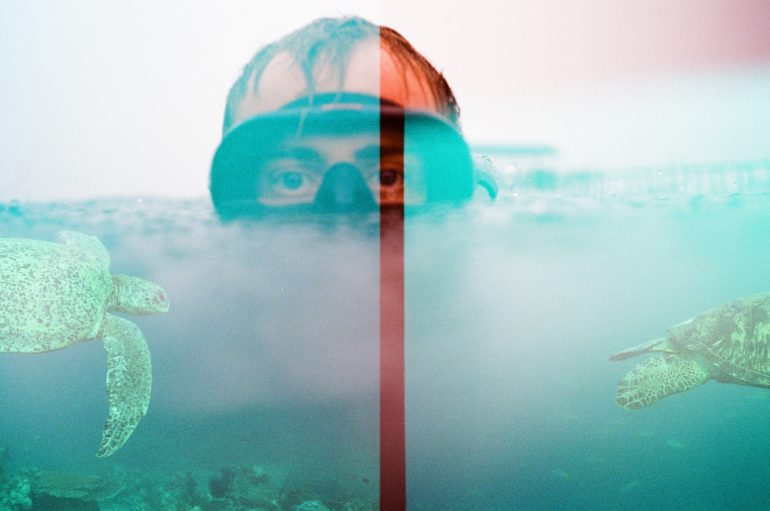 Misaligned selfie, Nikonos V 35mm Portra400
Misaligned selfie, Nikonos V 35mm Portra400
The Phoblographer: Apart from old school charm, what is it that makes you shoot more film underwater? Isn’t it a lot more practical to shoot digital in such challenging lighting conditions?
Barney Smith: When I was younger I would take a GoPro out diving with me, but often found myself staring at the digital screen instead of taking in the beautiful scene in front of me. The cost of film and only having 36 frames on a roll of film does limit me, however, only taking a shot after I’ve really carefully considered a scene leads to a more enjoyable dive. I will often only take 3 or 4 shots on a single dive and spend the rest of the time enjoying the experience of being underwater.
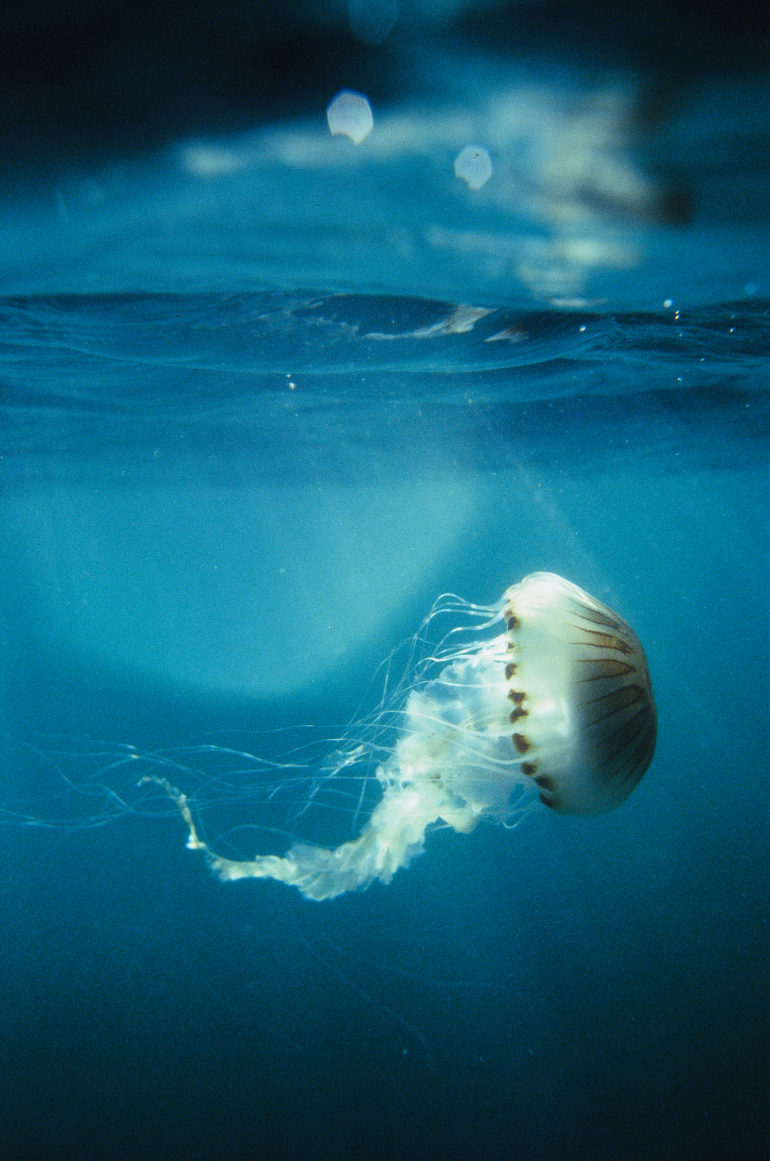 Compass Jellyfish, UK Nikonos V 35mm Ektachrome pushed 2 stops
Compass Jellyfish, UK Nikonos V 35mm Ektachrome pushed 2 stops
The Phoblographer: When you’re so many feet under the surface of the ocean, dealing with the awe of the vastness around you can’t be easy. How do you keep your thoughts clear and compose such good images?
Barney Smith: I’ve had my fair share of stressful dives in ripping up & down currents in Indonesia, and sometimes I regret bringing the camera down with me when conditions are that bad. But most of the time the process of estimating distance, exposure & framing actually calms me down as I’m able to focus on something mathematical, although you need to be comfortable with your buoyancy as you can find yourself drifting off in the wrong direction when taking photos.
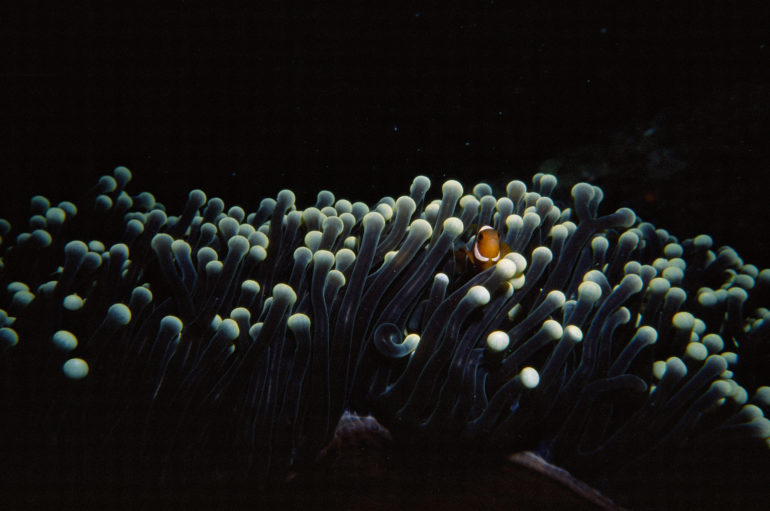 A flash of orange in the dark, Indonesia. Nikonos V 35mm + close up lens, Velvia 50, Dive Torch
A flash of orange in the dark, Indonesia. Nikonos V 35mm + close up lens, Velvia 50, Dive Torch
The Phoblographer: It’s almost like a movie poster in some ways. Tell us about the story behind that double exposure image of John Hook.
Barney Smith: I shot the roll of film during my last dive in Ponta Du Oura, Mozambique when I was diving with a fantastic family-run dive centre. It was on our safety stop that I decided to take a portrait of our guide Jenny. I had the intention of sending it to someone from the Nikonos community around the world but hadn’t yet asked John if he wanted to get involved. John Hook is a very talented film photographer in Hawaii and I particularly loved his work in big surf. After sitting on the roll of film back in the UK for nearly a year I plucked up the courage to ask him and sent it over to Hawaii, telling him ‘”there are lots of fish shots and a few diver portraits, shoot what you like”. Quite a lot of the shots were not so good, and after sleeping in a hot tent with me for a month the colours had shifted in a crazy way, but there are a few in there that were worth sharing.
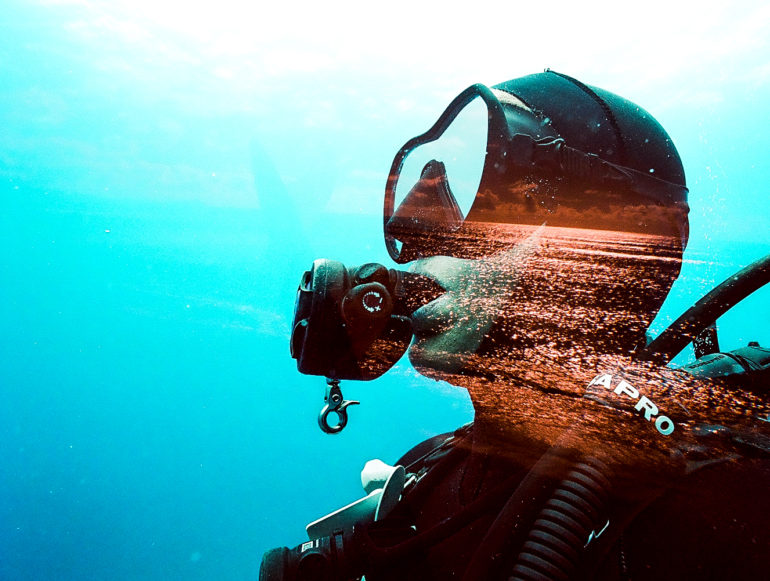
The Phoblographer: Did you ever think that roll of film would travel around the world so much?
Barney Smith: After nearly 30,000 km traveled, and over a year in waiting, I was surprised that we could get anything useable to be honest. It’s something I would love to do more of, connecting film photographers from around the world.
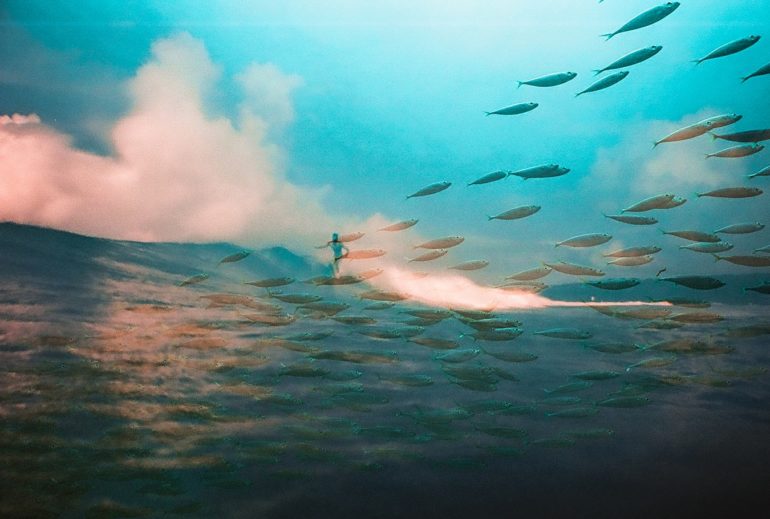
The Phoblographer: Split shots – still catchy or overdone now?
Barney Smith: I still really enjoy seeing split shots, I think they are a fantastic way to connect the ocean to the world above the surface. Mark Kirkland recently won British Underwater Photographer of the Year in the Backyard category with a fantastic split shot/long exposure in Glasgow, Scotland. This image just proves that with enough creativity and patience you can create poignant work in your own back garden.
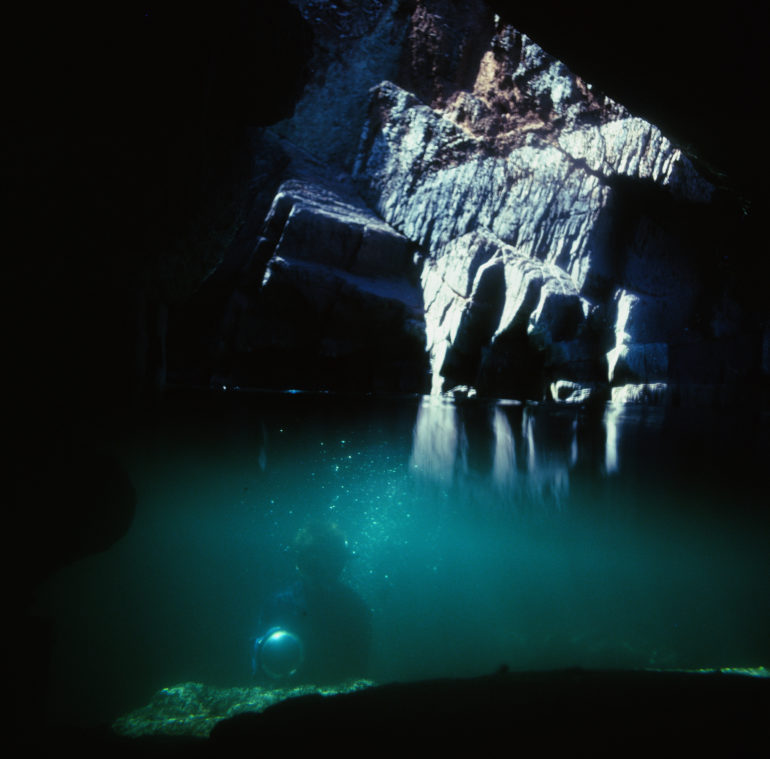 Hasselblad 500 C/M
Hasselblad 500 C/M
The Phoblographer: What part of our oceans excite you the most? Is there a particular species of marine life that you enjoy taking pictures of more than others?
Barney Smith: Some of my favorite animals to photograph are the species that will stay still long enough for me to observe their behavior and are comfortable for me to photograph them in their own environment. Anemonefish, cuttlefish, lionfish, jellyfish & Atlantic grey seals to name a few of my favorites.
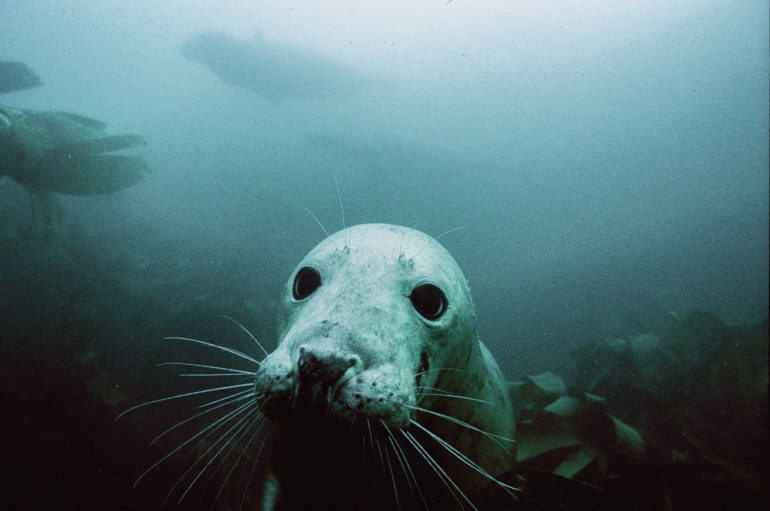 Curious Atlantic Grey Seal, UK, Nikonos V 15mm Portra 800
Curious Atlantic Grey Seal, UK, Nikonos V 15mm Portra 800
The Phoblographer: Have you had any unexpected moments while underwater? Have any creatures approached your camera almost like they were posing for a shot?
Barney Smith: On a very memorable shark dive in Mozambique we dropped down to 40m to the top of a pinnacle where we spent the next hour slowly rising surrounded by big bull sharks, hammerheads and tiger sharks. Suddenly out of the blue appeared a lone dolphin who began to swim in around the sharks, chasing and teasing them, it would then shoot up to the surface right past us and then rocket back down to continue its game. It really felt like it was showing off. I had some grainy pushed Lomography black & white film loaded into my Nikonos and shot off one of my favourite shots from the trip.
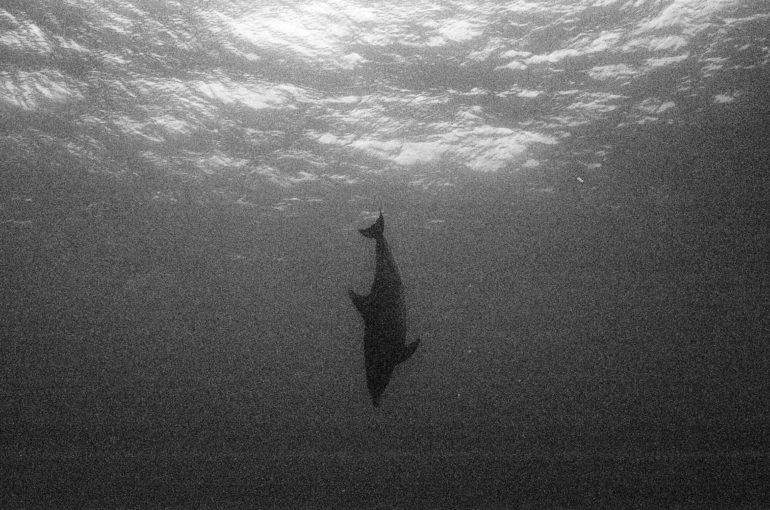 Nikonos V 35mm Potsdam Kino 100 pushed 3 stops.
Nikonos V 35mm Potsdam Kino 100 pushed 3 stops.
The Phoblographer: To you, what would be the ultimate oceanic frontier to photograph, and why?
Barney Smith: I’ve been lucky enough to photograph my fair share of tropical reef and temperate marine ecosystems, but I’ve always dreamed of photographing underwater caves such as the Cenotes in Central America. Its becoming clearer how closely related the Cenote cave systems are with the Mangrove forests and the tropical reefs in Mexico. Human pressure on one of these systems can cause a dramatic effect to the others. I would love to spend some time creating a body of work interweaving these different marine systems with the people that rely on them.
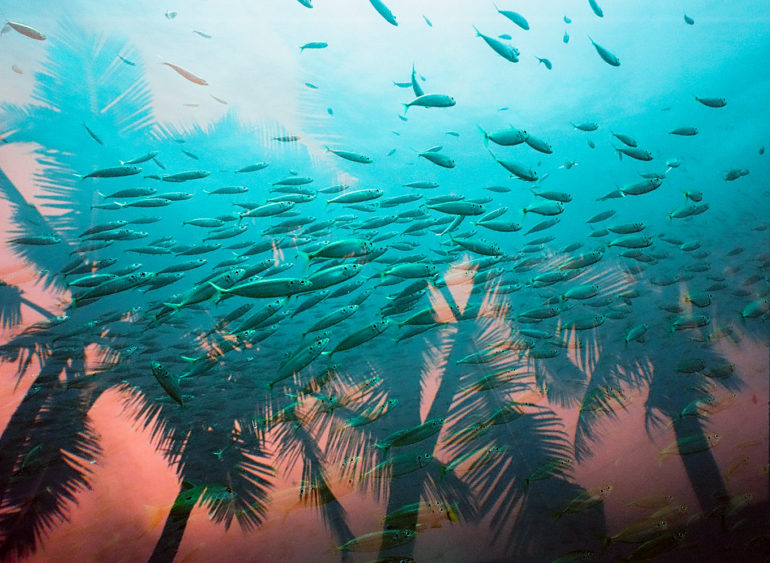
The Phoblographer: Ocean life is fast being depleted. What can we do as photographers to spread the word of conservation and climate change?
Barney Smith: Social media can be a very powerful tool for change, and at the forefront of this, photographs and video can be used really effectively to push the message of climate change and hopefully help to slow the accelerated destruction of our oceans.
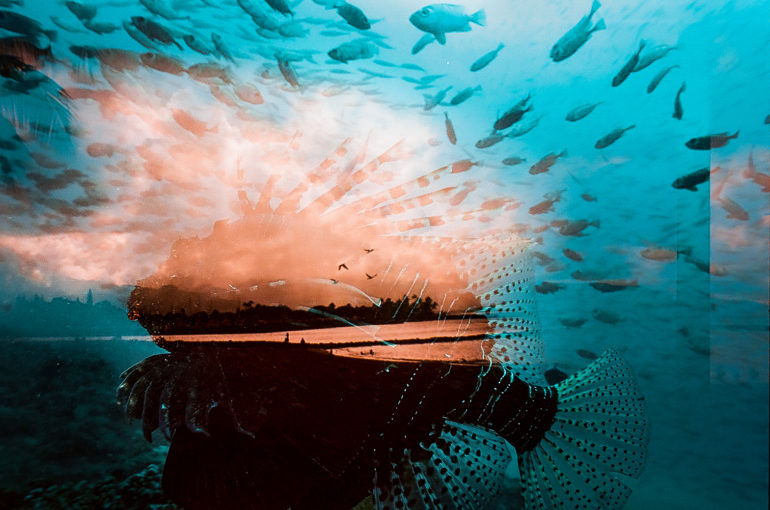
All images by Barney Smith. Used with permission. Visit his Instagram page to see more of his work.

